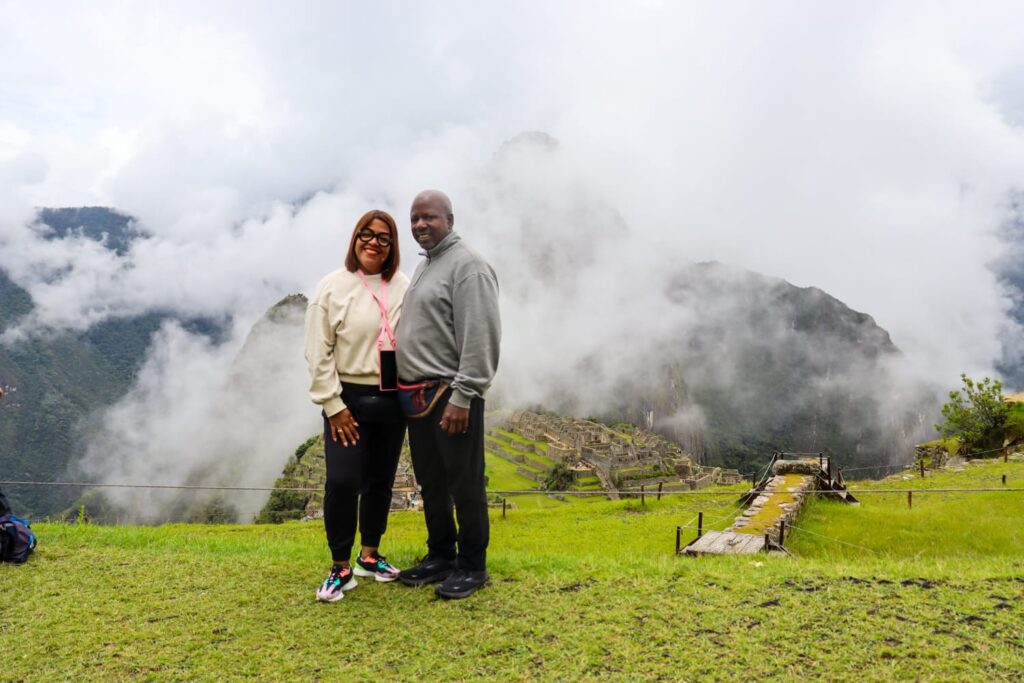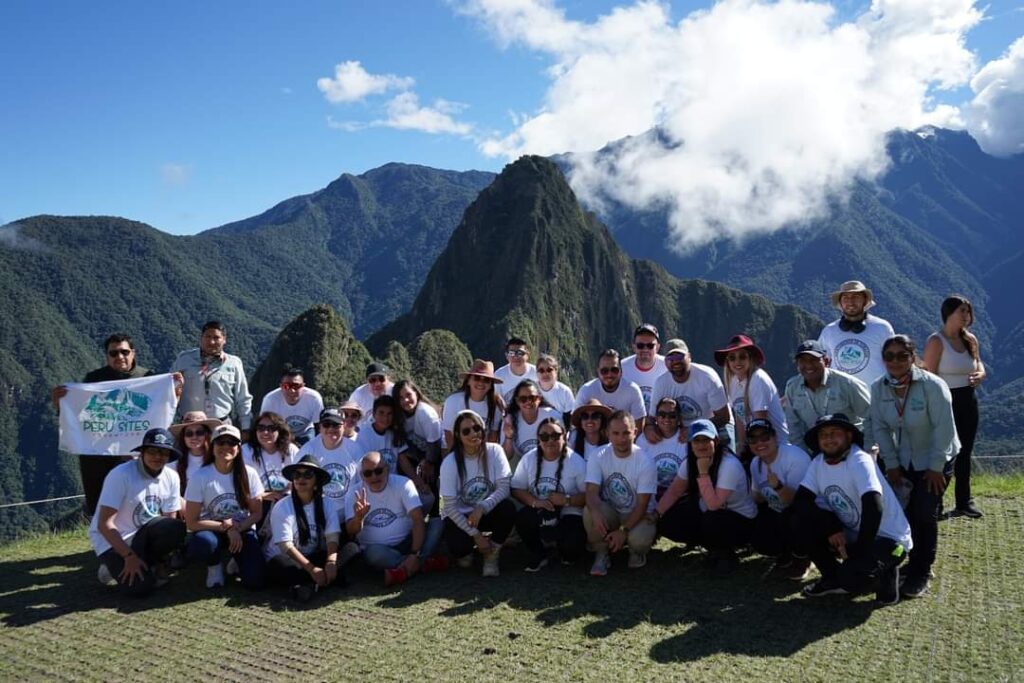The climate in Cusco has two distinct seasons, rainy season and dry season, the rainy season from December to March, although during those months the visits to Machupicchu are normal, taking the appropriate measures such as waterproof jackets or poncho, dry season from April to November.
Coldest and hottest months in Cusco: When do you feel the Andean winter?
The coldest and hottest months are between May and August. During these months, the average temperature drops considerably , ranging from 3°C to 14°C degrees.
June and July are the coldest and hottest months in Cusco. Throughout these months, some days are very hot thanks to the sun that heats up from noon (ultraviolet radiation levels increase), so it is advisable not to go out without sunscreen. However, when the sun goes down in the evening after 6 pm, the sun hides, thus initiating the penetrating cold, where visitors should take their measures before leaving home and their hotel, in the early mornings are very low reaching temperatures down to minus 0°C, and the month of August is better known as the month of the winds.
June: It is during this month of June where the winter solstice is celebrated every June 24 (Inti Raymi or Festival of the Sun), preceding this festival is celebrated in Cusco (Cusco festivities), where typical dances are presented and Cusco’s own cuisine is tasted.
July: Patriotic month, month in which the military parade and the parade of all institutions (schools, universities, etc.) are present.
August or month of the winds: A very respected month, where an offering is given and payment is made to our mother earth or Pachamama, a festivity instilled from our ancestors or Inca origins; also because it is a month where the winds are intense, all the locals take the opportunity to go out and head to the high parts of Cusco (Saqsayhuaman) to fly their kites.
Visiting Cusco in winter offers a unique experience of the Andes. The mountains are shown with their snow-capped peaks under a clear blue sky, allowing a clear and spectacular view of the landscapes and archaeological sites. The dry climate and cold temperatures enhance the beauty of the snow-capped peaks, creating a perfect contrast with the greenery of the valleys. Despite the cold, this time of year allows travelers to explore at leisure and enjoy the Andean culture, with traditional festivities and customs in June (Cusco festivities) and July (Fiestas patrias).
Rainy season in Cusco: a complete guide
Cusco, located in the southern highlands of Peru, also called the navel of the world, a place where you will find all seasons and seasons of the year, from the coldest (dry) to the hottest (rainy).
Rainy Months and Green Landscapes
Generally the warmest season is between November and March, going hand in hand with the rainy season. During these months, the average temperature can vary between 6 and 18 °C, although on the sunniest days it can reach up to 23 °C in some low-lying areas. Mornings and afternoons are usually mild, while at midday, the sun is intense due to the city’s altitude. Nights, on the other hand, are usually cooler.
These rainy dates we can not discredit the green and fresh landscapes that nature offers us, since the pleasant temperatures and vegetation enhance the beauty of this historic region. So nature-loving travelers can not miss visiting Cusco and its Wonders, although during those months visits to Machupicchu are as normal, taking the recommendations for the rainy months.
Dry season in Cusco: all you need to know
The dry season in Cusco starts in May until September, a highly recommended time to visit the imperial city and one of the wonders of the world “Machu Picchu”. During these months, the weather is favorable to enjoy the archaeological sites in its clarity and splendor due to the absence of rain, allowing the adventurer to perform all kinds of activities without any setback with the weather.
As it is a dry season, it is a very demanded season, so it is advisable to book your entrance tickets to Machu Picchu in advance to avoid possible crowds and even not to visit this wonder.
In addition, dry air and low temperatures during the night can affect those who are not used to it, so it is advisable to hydrate adequately and wear warm clothing to adapt to temperature variations during the day.
Characteristics and recommendations for the dry season in Cusco:
| Feature | Descripción |
| Main months | May to September |
| Daytime temperatures | 15 – 20° C |
| Nighttime temperatures | 0 – 5°C |
| Visibility | Clear with clear skies |
| Recommended activities | No restrictions |
| Recomendaciones | Make your reservations in advance Wear appropriate clothing for temperature changes (day and night). |
Varied weather in Cusco: reasons and what it means for your trip
The climate in Cusco is very varied, mainly due to the altitude and geographical location in the Peruvian Andes. Located at 3,400 meters above sea level, Cusco presents abrupt temperature changes between day and night, as well as a clear distinction between the dry season (from May to September) and the rainy season (from November to March).
Variable seasonal days in Cusco:
1: On a rainy and cool day (November – March); During the rainy season it presents a temperature up to 18°C, and a few hours later having an abrupt change with rains, reaching up to 10°C, it is there where Cusco presents its beauty adorned with rainbows in the skies and its cool climate, enjoying 2 seasons in one day. This climatic variability means the need to be prepared for varying conditions throughout the day, so one should wear waterproof jackets or rain ponchos. In this rainy season, although daytime temperatures are warmer and cooler, rains can be intense, which can affect access to some trekking routes or tours, so it is recommended not to have tight days for your visits in Cusco, but to give yourself some days off.
Machu Picchu in rainy season: In these rainy seasons, Machu Picchu looks even more green, fresh and beautiful, the important thing is to feel its vibes that gives you this magical place.
When the fog covers the citadel of Machu Picchu with its mantle, a phenomenon that happens in the early hours of the day (usually from 6 to 9 am) and then Machu Picchu is radiant, green and fresh. But the fog is not always present every day of the rainy season, there are many days that the panorama is clear.

2: A dry and cold day (May to September); During the dry season, clear skies allow for spectacular views and outdoor activities, but the nights are cold and can reach temperatures close to 0 °C (32 °F).
In the dry season, although daytime temperatures are colder and drier, we will not have unforeseen events that will interrupt our visit to any archaeological site or to go hiking, trekking and any adventure tour.
Machu Picchu in dry season (May to October): This season is the best time to visit Machu Picchu, since every day is clear and it is difficult to have setbacks such as air flight delays. Here is a panoramic view of the citadel at this time.

When is the best time to travel to Cusco? Tips and recommendations
The best time to travel to Cusco is usually during the dry season, which runs from May to September, when weather conditions are more stable. During these months, the skies are usually clear and rainfall is scarce, which facilitates outdoor activities and adventure tours such as hiking, trekking, but, it is important to note that it is also the high season in tourism, so it is recommended to make your reservations in advance.
Quiet months if demand is higher
For those who prefer a quieter and more accessible environment, the months of November to March can be ideal. During these rainy periods, the influx of tourists and accessibility to Machu Picchu are quieter because it is low season.



